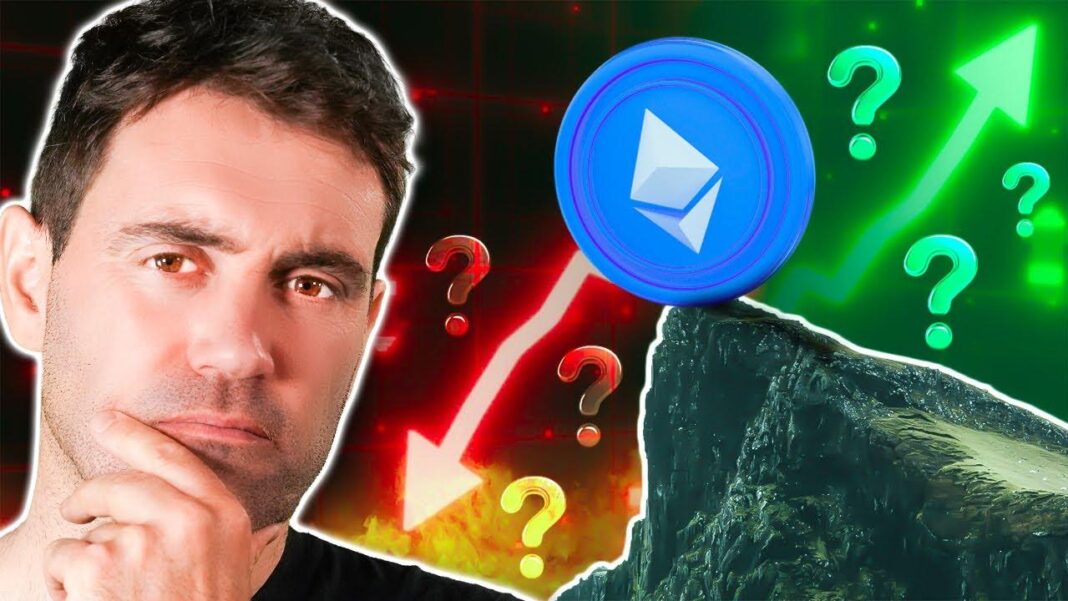In the YouTube video titled “The Future of ETH: Assessing the Post-Merge Outlook,” the host discusses the implications of the recent Ethereum merge for the future of the network and the price of ETH. The video also explores potential risks that may arise in the post-merge era. The host delves into the transition to proof of stake and the concerns raised, particularly regarding the centralization of validators on the network. Furthermore, the potential for regulatory capture of Ethereum is discussed, with recent comments from Gary Gensler raising questions about how regulators may view proof of stake. The video provides valuable insights on the potential impact of these factors on ETH and is a valuable resource for those holding or considering investing in Ethereum.
The post-merge era brings significant changes and potential risks for the Ethereum network and the price of ETH. One of the immediate concerns is the risk of validator centralization on the network. With 42% of the network effectively controlled by two entities, the supposed decentralization of Ethereum is compromised. This centralization raises questions about the network’s security and the potential for regulatory capture, especially in light of Gary Gensler’s concerns about cryptocurrencies that allow users to stake their coins.
The video also highlights regulatory challenges that further compound the uncertainties surrounding Ethereum validators. Gensler’s recent assertion that such cryptocurrencies could be seen as securities based on the “Howey test” criteria has raised questions about how regulators will view proof-of-stake Ethereum. This comes at a time when it seemed likely that Bitcoin and Ethereum would fall under the jurisdiction of the commodity Futures Trading Commission, a more cryptocurrency-friendly regulatory body. If Ethereum were to be designated as a security, it could potentially put validators in breach of securities laws, adding another layer of complexity to the situation.
In summary, the post-merge outlook for Ethereum is filled with both promise and risks. The impact on the network and the price of ETH remains uncertain, while concerns about validator centralization and potential regulatory challenges loom large. As the future unfolds, stakeholders in the Ethereum ecosystem will need to closely monitor these developments and adapt accordingly.
Q&A
Q: What is the topic of the YouTube video “The Future of ETH: Assessing the Post-Merge Outlook”?
A: The YouTube video discusses the future of the Ethereum network and the price of ETH after the merge to proof of stake.
Q: What was the outcome of the Ethereum merge to proof of stake?
A: The Ethereum merge to proof of stake was successful and occurred on Thursday at 6:40 AM UTC.
Q: What happened to the price of ETH after the merge?
A: The price of ETH briefly shot up in a relief rally but fell by almost five percent as the day progressed.
Q: What risk is highlighted in the video regarding the Ethereum network post-merge?
A: The video highlights the risk of validator centralization on the Ethereum network, which is considered alarming.
Q: How much of the network was effectively controlled by two entities?
A: The video states that 42% of the Ethereum network was effectively controlled by two entities.
Q: Why is the centralization of a supposedly decentralized network concerning?
A: The centralization of a decentralized network goes against the principle of decentralization and raises concerns about potential regulatory capture.
Q: Who made a statement regarding cryptocurrencies on the same day as the merge?
A: Gary Gensler made a statement regarding cryptocurrencies during his testimony in front of U.S. politicians on the same day as the merge.
Q: How did Gary Gensler’s statement relate to Ethereum?
A: Gary Gensler’s statement suggested that cryptocurrencies allowing users to stake their coins could be seen as securities, which raises questions about how regulators will view proof of stake Ethereum.
Q: What regulatory body was mentioned in relation to Bitcoin and Ethereum?
A: The Commodity Futures Trading Commission (CFTC) was mentioned as a regulatory body that may potentially regulate Bitcoin and Ethereum in the future.
Q: What potential issue could arise if Ethereum was designated as a security?
A: If Ethereum were designated as a security, it could potentially put the validators in breach of securities laws.
In Summary
In conclusion, the Ethereum merge to proof of stake was a significant event in the crypto world, raising questions about the future of the network and the price of ETH. While there was initial relief and a price rally, concerns quickly emerged regarding validator centralization. With 42% of the network under the control of two entities, the decentralized nature of Ethereum is at risk. This is especially worrisome considering the potential for regulatory capture, as indicated by SEC Chairman Gary Gensler’s recent statements on cryptocurrencies. His suggestion that stakeable coins could be seen as securities raises uncertainty about how regulators will view proof of stake Ethereum. Previously, it seemed that Bitcoin and Ethereum could fall under the jurisdiction of the commodity Futures Trading Commission, which is more knowledgeable about cryptocurrencies. However, the designation of ETH as a security would bring it back under the SEC’s oversight. While some may dismiss these concerns as mere speculation, it is important to assess the potential consequences and explore the implications for validators and securities laws. The future of ETH and the post-merge era remains uncertain, and further analysis and discussion are essential to fully understand the possible risks and opportunities ahead.
The world of cryptocurrency can be a confusing and rapidly evolving landscape. With new coins and tokens popping up almost every day, it can be challenging to keep up with the latest developments and understand the potential of each one. One such cryptocurrency that has been making headlines in recent times is Ethereum, or ETH. With its innovative platform and strong community support, ETH has steadily grown in popularity and market value. And now, with the highly anticipated Ethereum 2.0 or “Ethmerge” on the horizon, its potential is set to take a giant leap forward. In this article, we will explore the post-merge future of ETH and what it means for the cryptocurrency market.
Understanding Ethmerge:
Before we dive into the post-merge future of ETH, let’s first understand what Ethmerge is all about. Ethmerge is the term used to refer to the upcoming major upgrade to the Ethereum network, which involves merging the existing Ethereum mainnet with the Ethereum 2.0 beacon chain. This merger is expected to happen sometime in 2022 and will bring several significant changes to the Ethereum network.
These changes include the switch from the current proof-of-work (PoW) consensus mechanism to the more energy-efficient proof-of-stake (PoS) model. This change is expected to reduce the environmental impact of Ethereum mining and make the network more scalable. Additionally, Ethmerge will introduce sharding, a process that will partition the Ethereum blockchain into smaller sections, allowing for faster transaction processing and higher network capacity.
Impact on ETH and the Cryptocurrency Market:
The impact of Ethmerge on ETH is expected to be significant, with experts predicting an increase in the value of ETH in the long run. With the transition to PoS, miners will no longer be able to participate in securing the network, requiring them to sell their ETH holdings. This could lead to a brief dip in ETH’s value initially, but in the long term, it is expected to stabilize, especially with the introduction of sharding and increased scalability.
Another crucial factor to consider is the potential for increased adoption of ETH post-merge. With a more energy-efficient and scalable network, ETH could become a preferred choice for developers and businesses looking to build decentralized applications (dApps) or utilize smart contracts. This increase in demand for ETH could drive its value even further.
Furthermore, the post-merge future of ETH could also impact the entire cryptocurrency market positively. As the second-largest cryptocurrency in terms of market capitalization, ETH’s performance can have a significant ripple effect on other cryptocurrencies. With Ethmerge bringing improvements and advancements to the Ethereum platform, it could attract more investors and drive the market’s overall growth.
Benefits and Practical Tips for ETH Investors:
So what does all of this mean for ETH investors? If you are currently holding ETH or considering investing in it, the post-merge future looks very promising. As mentioned earlier, experts predict an increase in ETH’s value in the long run, making it a potentially profitable investment.
But as with any cryptocurrency investment, there are risks involved, and it is essential to approach it with caution. Here are a few practical tips for ETH investors to keep in mind:
1. Do your own research: Before making any investment, it is crucial to do your own research and understand the risks involved. This includes learning the fundamentals of ETH, such as its technology, community, and potential use cases.
2. Diversify your portfolio: While ETH has a lot of potential, it is essential to diversify your cryptocurrency portfolio to mitigate risks. Consider investing in other reputable cryptocurrencies to balance out your investment.
3. Keep an eye on the market: As the post-merge future of ETH unfolds, it is vital to monitor its performance and other external factors that may impact its value. Staying informed can help you make better investment decisions.
The Practical Benefits of Ethmerge:
Aside from the potential increase in ETH’s value and adoption, Ethmerge brings several practical benefits to the Ethereum network and its users. These include:
1. Energy efficiency: With the switch to PoS, the mining process will no longer require high computing power, making it more energy-efficient.
2. Scalability: Sharding will significantly increase the network’s capacity, allowing for faster transaction processing and supporting more users and dApps.
3. Lower transaction fees: With increased scalability, the network will be able to handle a higher volume of transactions, potentially reducing fees and making ETH more accessible.
First-hand Experience:
To understand the post-merge future of ETH better, we spoke to a few experts and active members of the Ethereum community. Sam Bankman-Fried, CEO of crypto exchange FTX, believes that Ethmerge will be a game-changer for Ethereum. He stated, “It will be one of the most significant changes to any blockchain since Bitcoin was created.”
Another member of the Ethereum community, Paulina Torres, shared her excitement about the potential for increased adoption, saying, “Ethmerge will take Ethereum to the next level and open up new possibilities for developers and businesses to utilize the platform.”
Conclusion:
The post-merge future of ETH is undoubtedly exciting and holds a lot of potential for investors, developers, and the entire cryptocurrency market. With Ethmerge expected to go live in 2022, it is a crucial time for investors to keep an eye on ETH’s performance and make well-informed investment decisions. The advancements brought on by Ethmerge could make ETH a key player in the cryptocurrency world and take it one step closer to its true potential.



